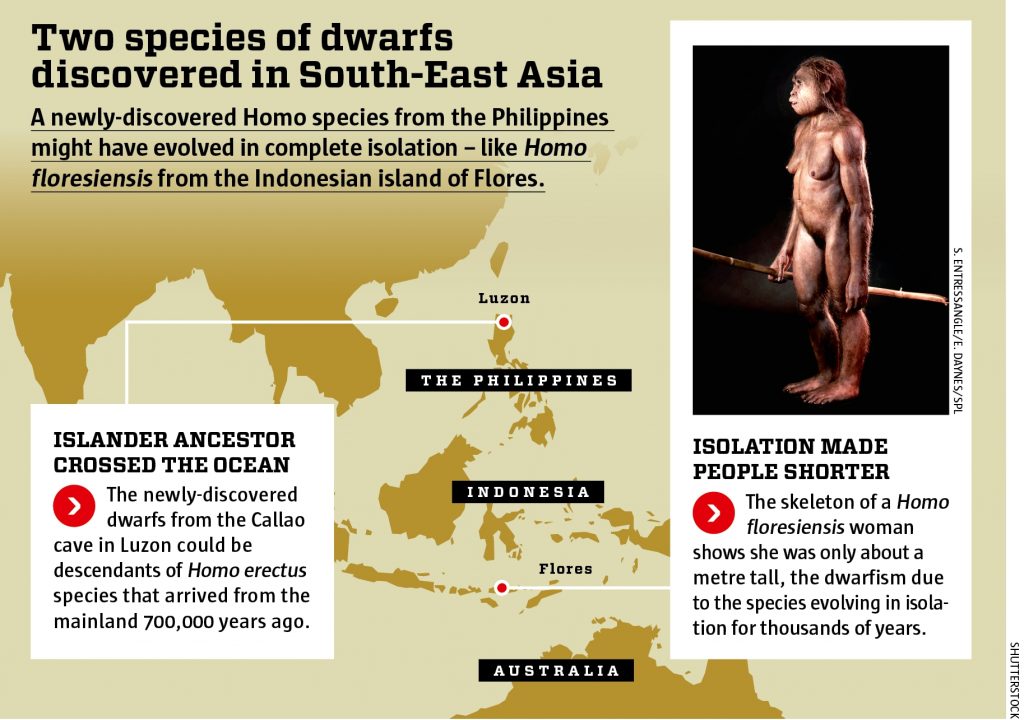
Scientists from the Australian National University have discovered bones and teeth that could add a new chapter to human history. Although the finds from the Callao cave in the Philippines are scarce, there is every indication they come from an unknown human species living some 50,000 years ago.
The new discovery was made in the northern part of the island of Luzon, the scientists so far excavating the remains of at least two adults and one younger individual. The shapes of toe and finger bones show that they walked upright, but must have been good at climbing trees, too.
The scientists are comparing the discovery to that of Homo floresiensis in 2003. Based on the size of the teeth, the people were short, as was Homo floresiensis, perhaps due to the phenomenon of insular dwarfism, by which species isolated on islands can end up smaller.
The teeth are also interesting in combining a mixture of primitive and modern traits. They look generally like our own teeth, but with one important difference: the front molar has three roots and not just one like ours. This characteristic is known from Homo species that are much older, such as Homo erectus. Perhaps humans on Luzon were descendants of a group of Homo erectus which arrived from the mainland more than 700,000 years ago. Other discoveries indicate that this early Homo species was able to cross surprisingly large straits of water, while stone tools have also been found on Luzon dating to this time.







